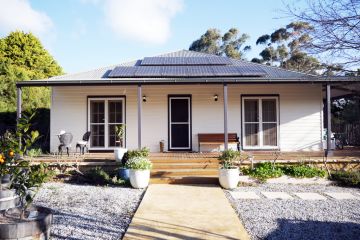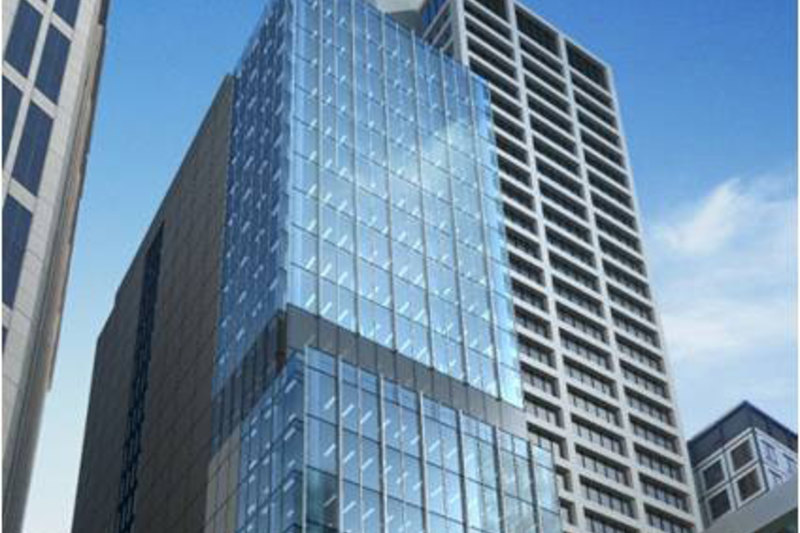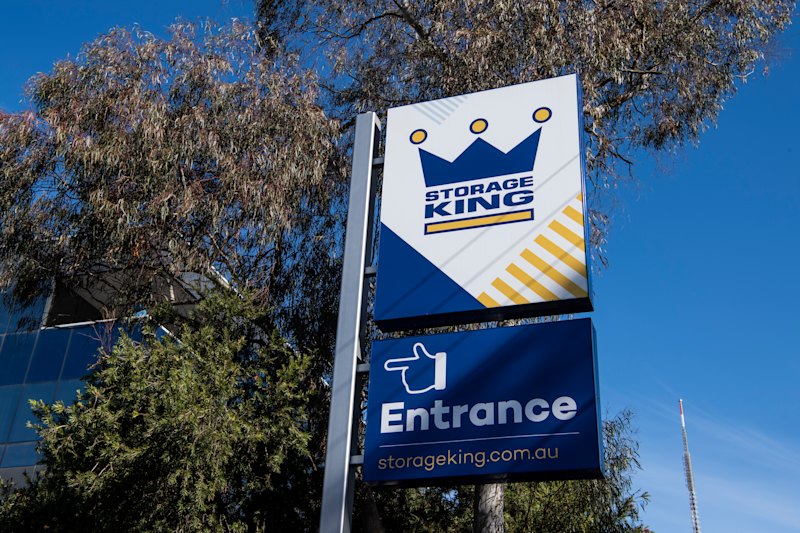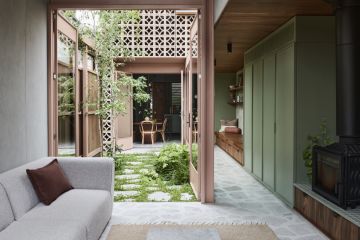'A love letter to Fitzroy': The heritage building transformed into wondrous retreat
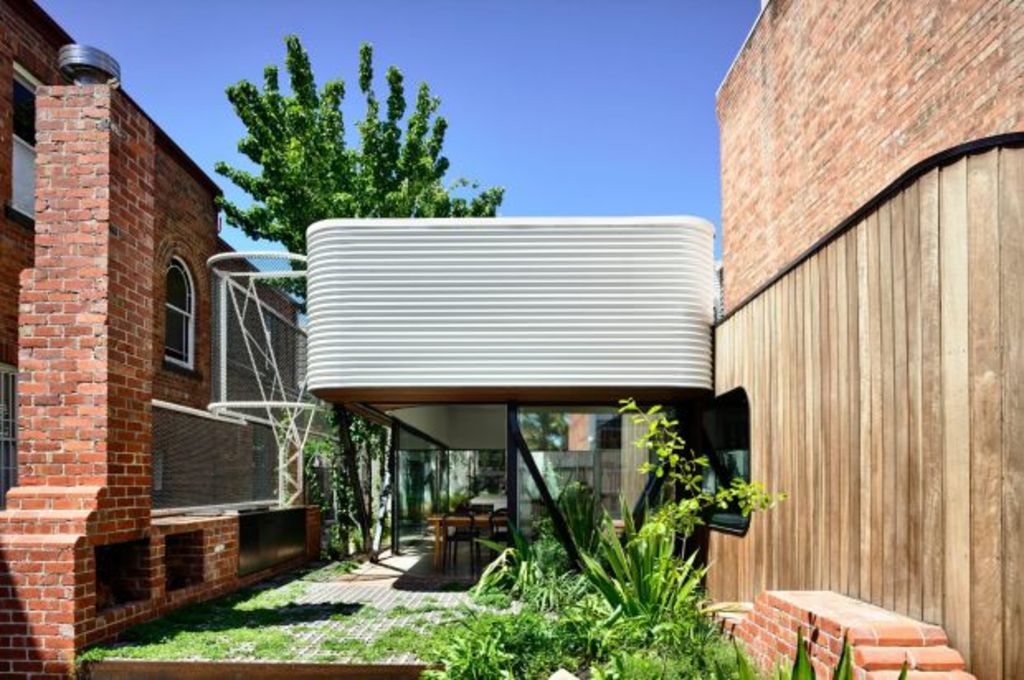
A derelict stable, a tree-filled garden and an eclectic neighbourhood have inspired the transformation of one family’s old Victorian terrace house.
The family of four wanted their double-storey home and garden on King William Street in Melbourne’s Fitzroy renovated in order to create a pocket park and larger more conducive living areas.
The home, built in the 1850s, was last renovated in the 1990s and still retains its untouched facade, stable and generous neighbouring garden.
When redesigning, the architects viewed the traditional terrace as anything but, considering it more as an empty space that required fresh purpose.

The home is on King William Street in Melbourne’s Fitzroy. Photo: Derek Swalwell

Built in the 1850s, the home was last renovated during the 1990s. Photo: Derek Swalwell
“The family wanted their ‘forever house’,” says Mark Austin, of Austin Maynard Architects. “They asked for separate spaces for the children and the adults, as well as an open-living, kitchen and dining area where they could entertain and come together.”
The solution is a spatial arrangement that includes a glazed corridor along the eastern outer wall of the original terrace that links the house with the stable at the rear.
- Related: Step inside artist Julia DeVille’s gothic fairytale
- Related: Inside the relaxed, chic home of stylist Tash Sefton
- Related: The weatherboard house on a wedge-shaped block
“The stable was dilapidated, but we were able to retain the original brick walls, internal fireplaces and timber beams,” he says.
“It now houses a car stacker and study, with the parents’ retreat above. The new pavilion houses the living, kitchen and dining area, and between them are connections to the garden, with the stable looking back towards the living room from under a curved eyelid.”

When redesigning, the architects created a modern extension on the traditional terrace. Photo: Derek Swalwell

The original house was retained and reused as much as possible. Photo: Derek Swalwell
The curve, says Austin, was the client’s innovation. “They are King Bill’s most distinguishing feature and something the family really wanted to see.”
Including curved feature walls and an inset curved concrete slab, the exterior of the stable, glass pavilion and bedroom are clad in curved corrugated Colorbond steel.
Sun-shading eyelids made from the same materials act as both design and functional features.
“King Bill is a beautiful meshing of the new with the old,” says Austin. “The light, white, clean, curved and open additions juxtapose well with the dark, heavy and aged heritage building.”

Outside, the established ornamental pear and silver birch trees also helped inform King Bill’s design. Photo: Derek Swalwell

When designing, sustainability was front of mind. Photo: Derek Swalwell
Outside, the established ornamental pear and silver birch trees also helped inform King Bill’s design.
“The eastern garden was initially a separate lot to the house, but was recently consolidated onto a single title,” he says. “The trees created boundaries that helped form fantastic spaces and pocket parks that open up the dark terrace house to the light.”
When designing, sustainability was front of mind.
“We retained and re-used as much of the original house as possible and ensured it relied on passive heating and cooling,” he says. “The overhangs of the pavilion and eyelids of the stable provide shade from summer sun, but let the winter sun in to heat up the polished concrete slab. The roof and walls are highly insulated and there is a water tank buried in the front courtyard.”

”The family wanted their ‘forever house’.” Photo: Derek Swalwell

“King Bill is a beautiful meshing of the new with the old,” says Mark Austin. Photo: Derek Swalwell

The curve, says Austin, was the client’s innovation. Photo: Derek Swalwell
Equally important, Austin says, is King Bill’s homage to the area.
“The sensitive additions made to the house impart Fitzroy’s fun and eclectic character,” he says.
“The fabric of the area has evolved over time. Today, it is a dynamic and exciting suburb still lined with original Georgian and Victorian brick terrace homes, weatherboard cottages, 1960s flats, old factories and re-purposed warehouses. King Bill is a collage of Fitzroy’s built history, its textures, its forms, its order and its chaos. King Bill is a love letter to Fitzroy.”
We recommend
We thought you might like
States
Capital Cities
Capital Cities - Rentals
Popular Areas
Allhomes
More

